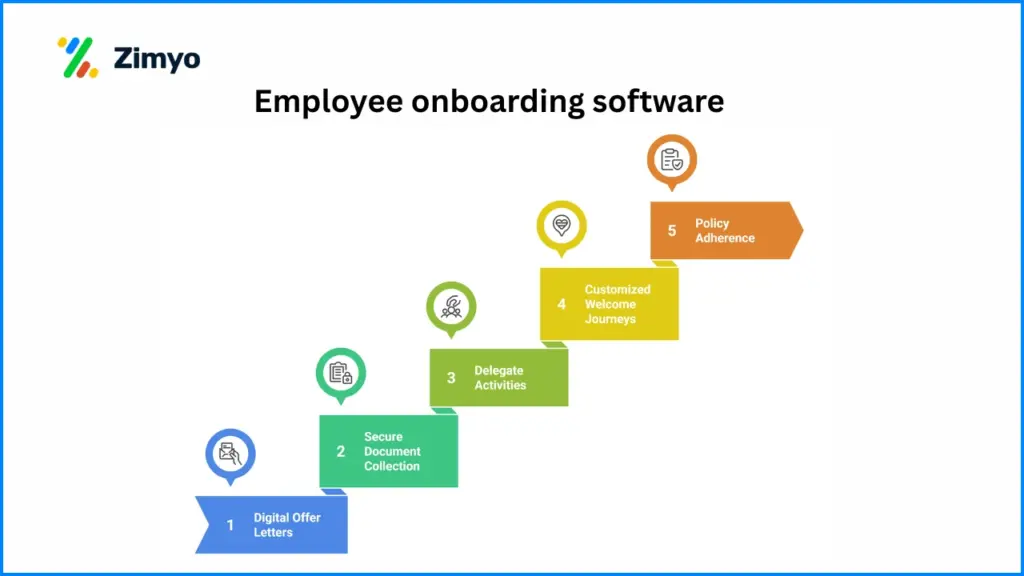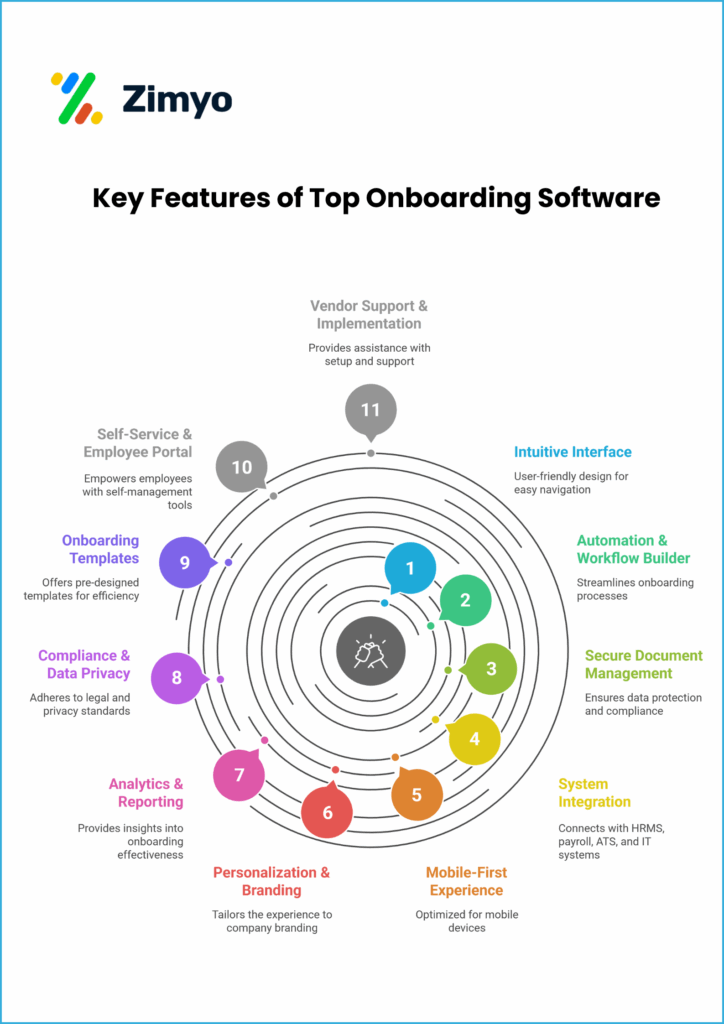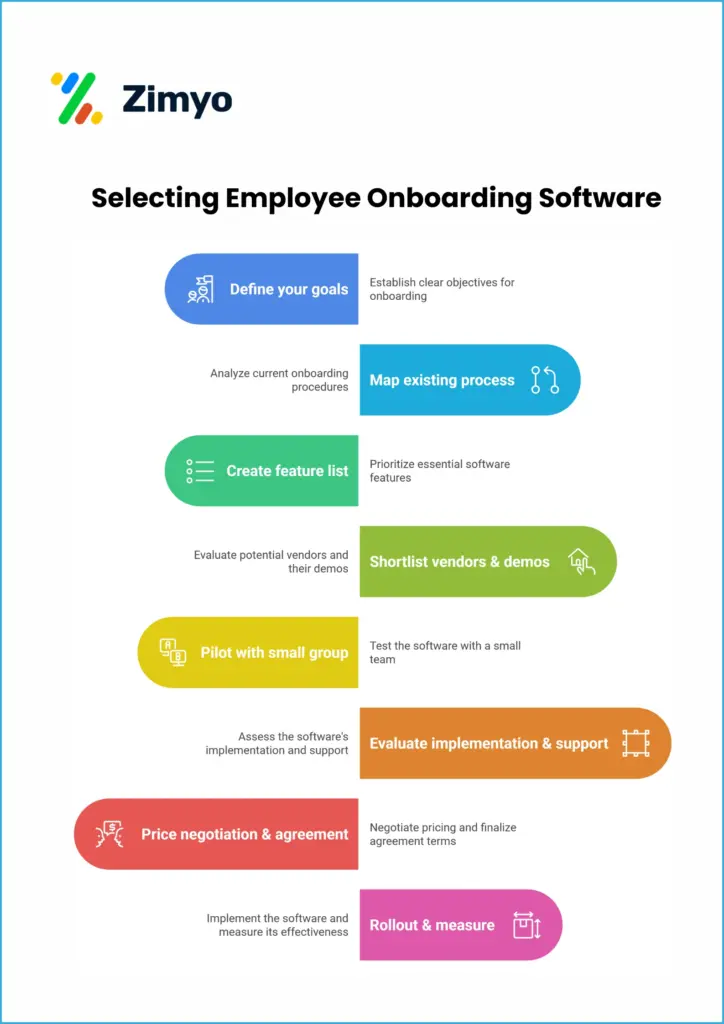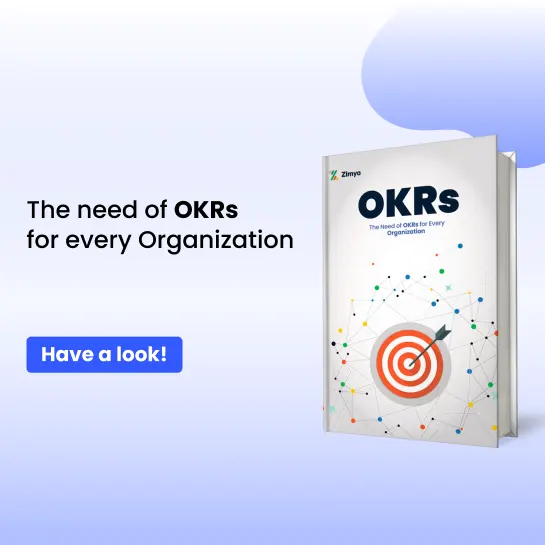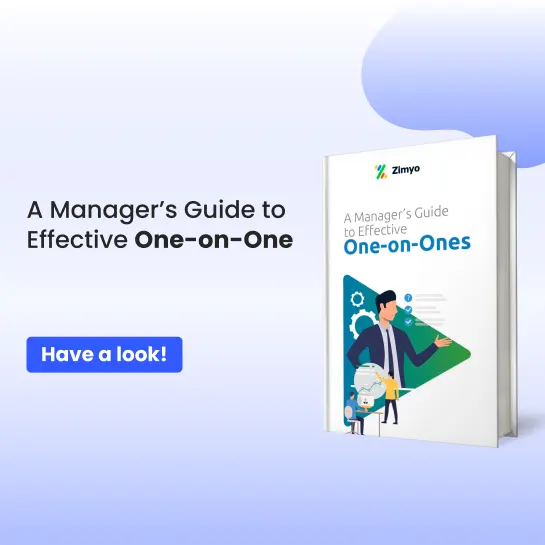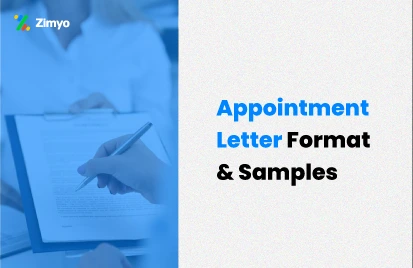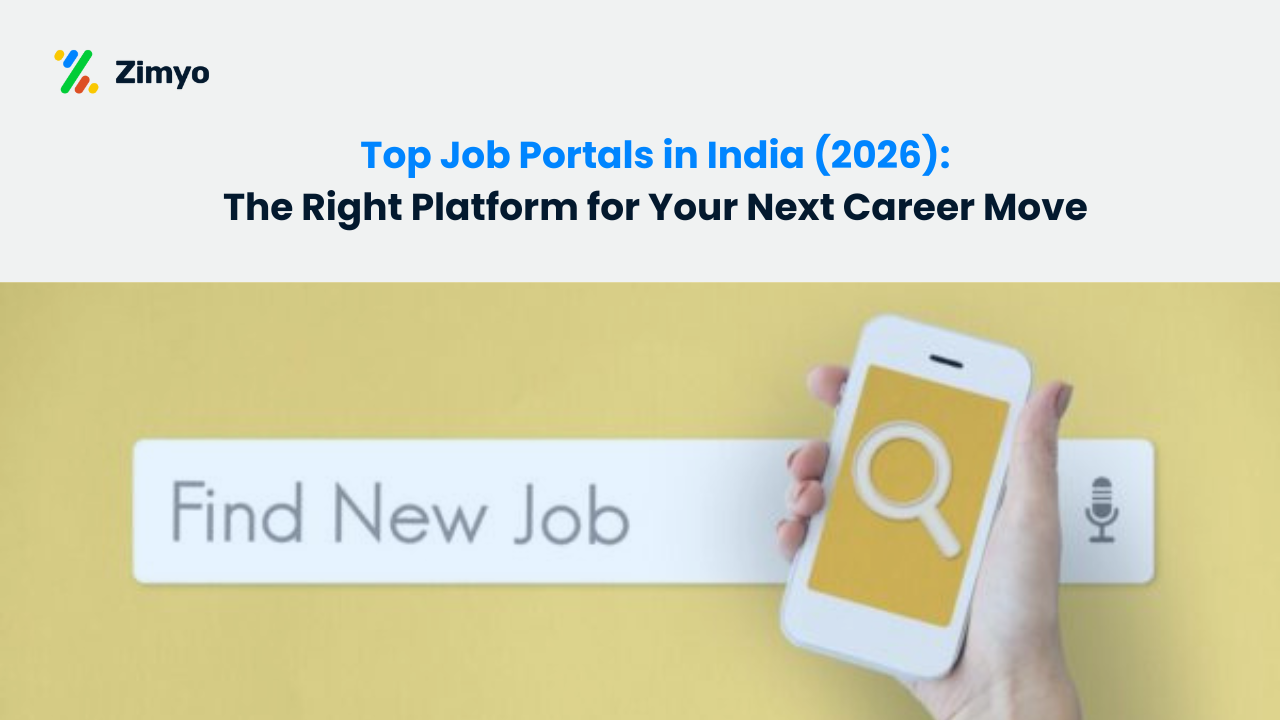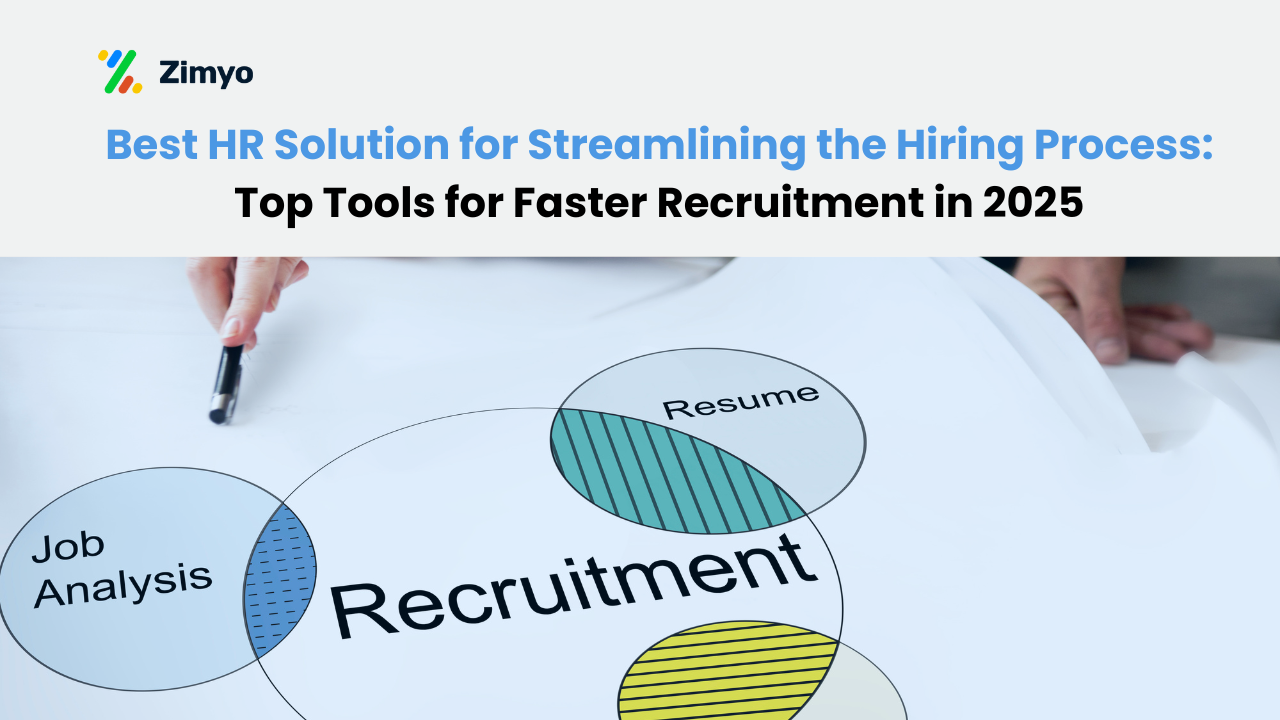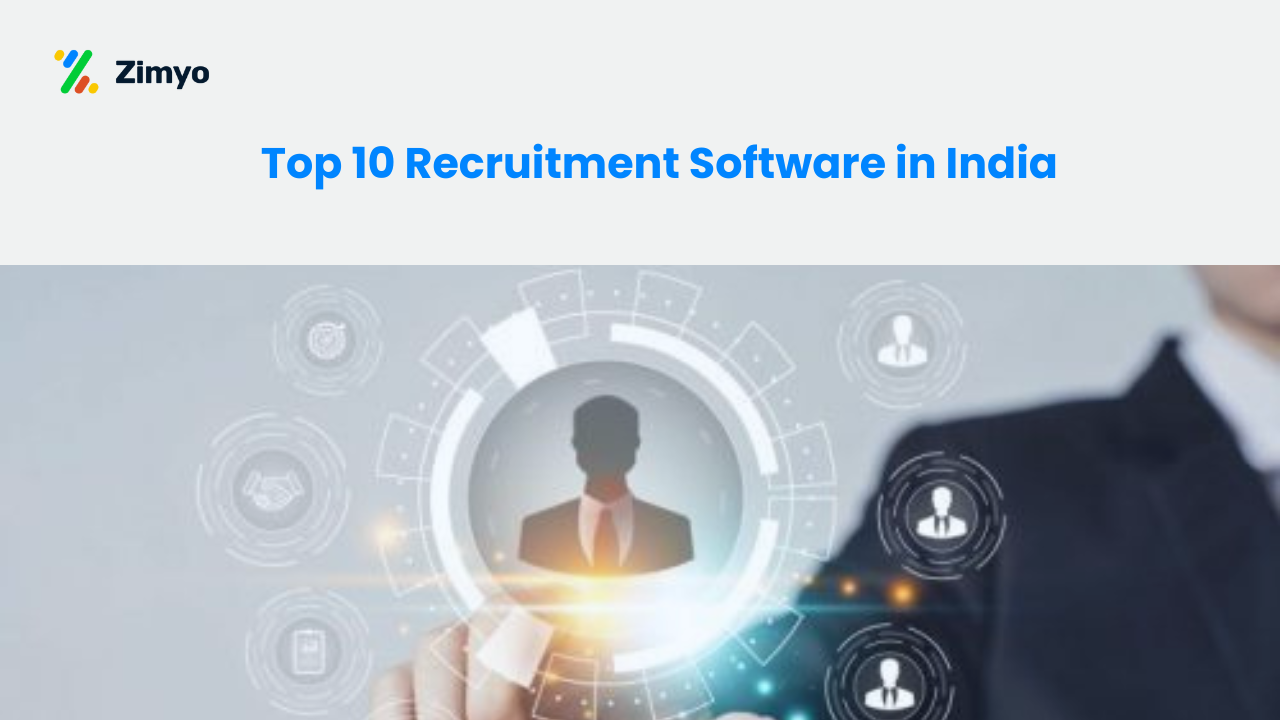Bringing in great talent is only half the war. The other half of the battle happens when you bring new employees into your organization. Onboarding isn’t merely about paperwork and pointing someone to a desk, it’s about making your employees comfortable, aligned with your culture, and prepared to succeed on day one.
Sadly, most organizations are still using the traditional, time-consuming, and error-prone onboarding processes. This is where onboarding software steps in. It eases the workload of HR teams by automating routine tasks, maintaining compliance, and providing a seamless and interactive experience for new employees.
In this blog, we will deconstruct what onboarding software is, review the best employee onboarding software out there today, compare their features, and guide you in figuring out which one is best for your business.
What is Onboarding Software?
Let’s understand – Onboarding software is an online tool intended to align the employee onboarding process as quick, simple, and organized. Rather than having HR managers switching between forms, emails, and checklists manually, onboarding software enables everything to be controlled from a single dashboard.
Employee onboarding software enables you to:
- Send digital offer letters.
- Securely collect documents using e-signatures.
- Delegate onboarding activities to managers and colleagues.
- Design customized welcome journeys for new employees.
- Ensure adherence to company policies and labor legislation.
Contemporary HR onboarding software also automates integration with HRMS, payroll, and learning management systems so that employees can transition into their jobs seamlessly. This not only prevents the wasting of HR teams’ time but also makes a great first impression on employees.
List of Best Employee Onboarding Software
- Zimyo
- Darwinbox
- Zoho
- PeopleStrong
- BambooHR
- Enboarder
- WorkBright
- Rippling
- Keka
- Superworks
The Best Employee Onboarding Software: In Detail
Here is a more detailed of the best employee onboarding software platforms in the market today. Each one has its own advantages, so you can choose the one that best fits your company requirements.
1. Zimyo
Zimyo is among the most reliable HR onboarding software in India, providing end-to-end onboarding solutions. It automates formalities joining, paperwork, and employee induction, ensuring the experience is hassle-free for both employees and HR.
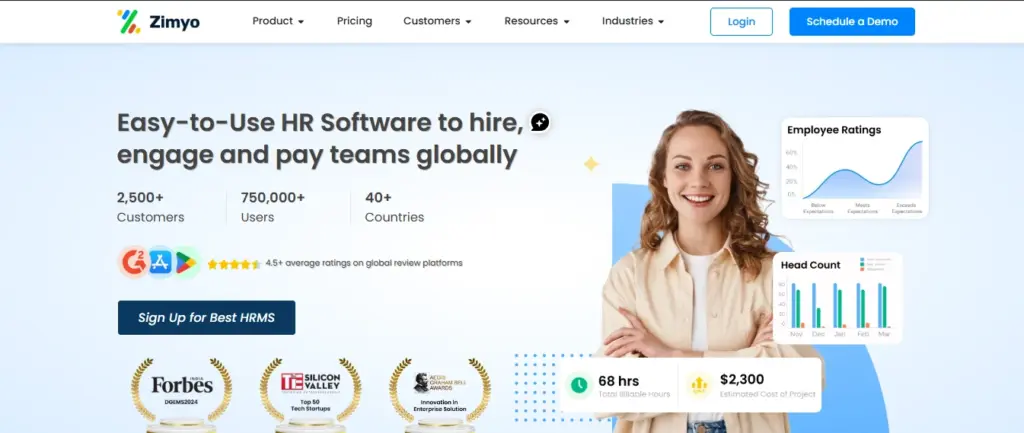
Key Features
- Digital document collection and verification
- Automated offer letter generation
- Preboarding features to connect employees prior to day one
- Self-service onboarding portal for hires
- Seamless integration with HRMS and payroll
Pros
- Extremely customizable onboarding processes
- Easy-to-use interface for employees and HR teams
- Solid preboarding features for enhanced engagement
- Low cost for small and medium enterprises
Cons
- High-end features might need add-ons
2. Darwinbox
Darwinbox delivers a solid HRMS onboarding solution tailored to large corporations. It streamlines onboarding with automation and integrates easily with the broader HR suite.
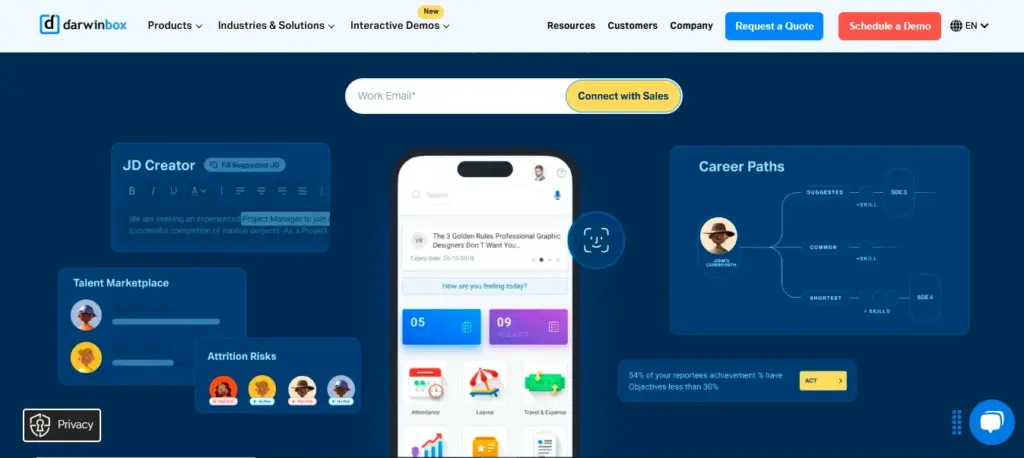
Key Features
- Centralized digital document management
- Automated task allocation for onboarding teams
- Integration with payroll and compliance systems
- Employee self-service portals
- Role-based access for security
Pros
- Suitable for large-scale enterprises
- Rich analytics for onboarding performance
- Strong compliance support
Cons
- Complex setup for smaller companies
- Pricing can be high for startups
3. Zoho People
Zoho People is an HR software that is cloud-based with robust employee onboarding capabilities for startups and SMEs. Its adaptability is its main selling point.
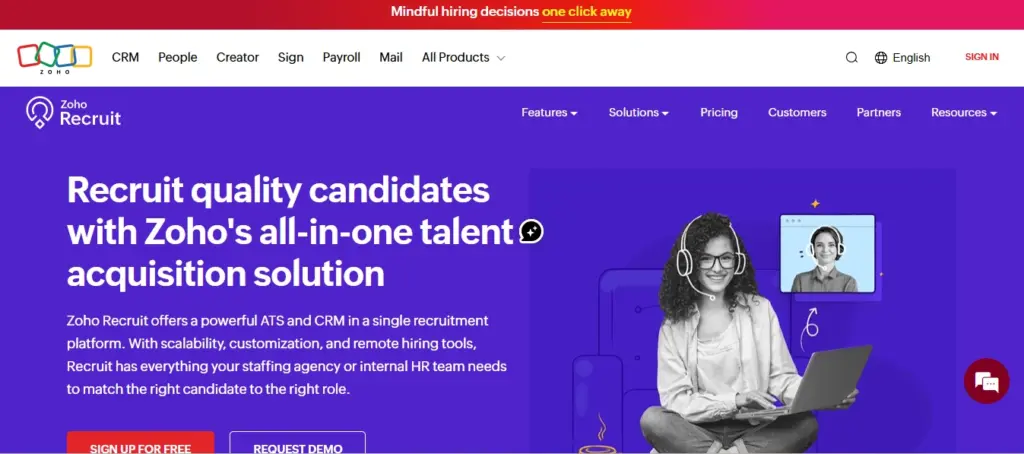
Key Features
- Checklists and templates for onboarding
- E-signature integration
- Preboarding engagement features
- Integration with Zoho applications (Payroll, CRM, etc.)
- Cloud document storage
Pros
- Simple to install and scale
- Smooth integration into Zoho ecosystem
- Affordable for small companies
Cons
- Limited customization in comparison to enterprise-level HRMS platforms
- Can prove too complex for users outside of Zoho
4. PeopleStrong
PeopleStrong is an enterprise HRMS platform. Its employee onboarding system is reputed to be intuitive and compliance-driven.
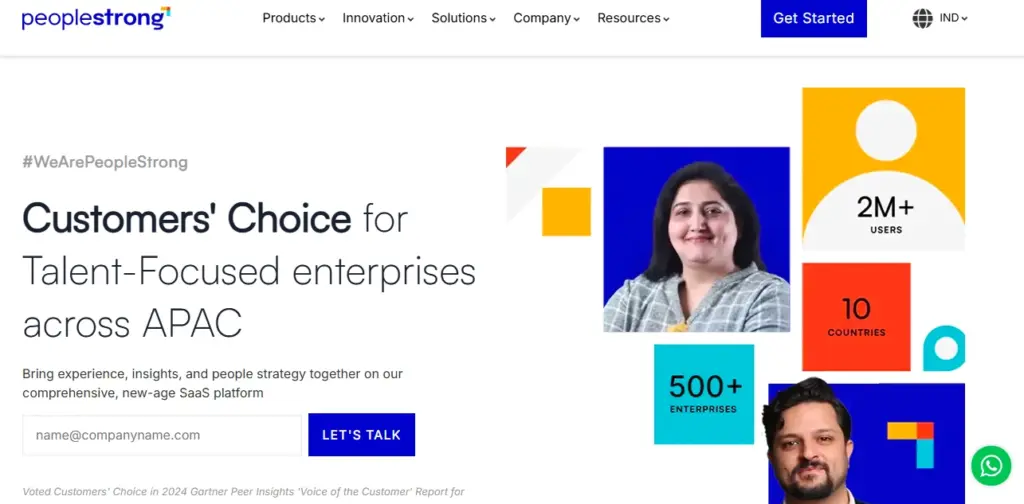
Key Features
- AI-powered onboarding flows
- Automated verification of documents
- Integration with learning and payroll software.
- Personalized onboarding experiences
- Preboarding communication modules
Pros
- Ideal for enterprises with intricate onboarding requirements
- Strong compliance and security features
- Mobile-first design
Cons
- May be costly for startups
- Takes training for HR admins
I was able to implement the platform on my own. It helps in assigning the tasks to other employees, conducting surveys and polls, and much more. The ease of use and self-onboarding is something that I would like to appreciate.
Sonali, Kommunicate
Zimyo simplifies attendance management for our organization. The leave and attendance are so streamlined that we have never faced any difficulties with the system.
Anurag, Eggoz Nutrition
5. BambooHR
BambooHR is a widely used HR onboarding software that is popular for being easy to use and having a seamless user experience.
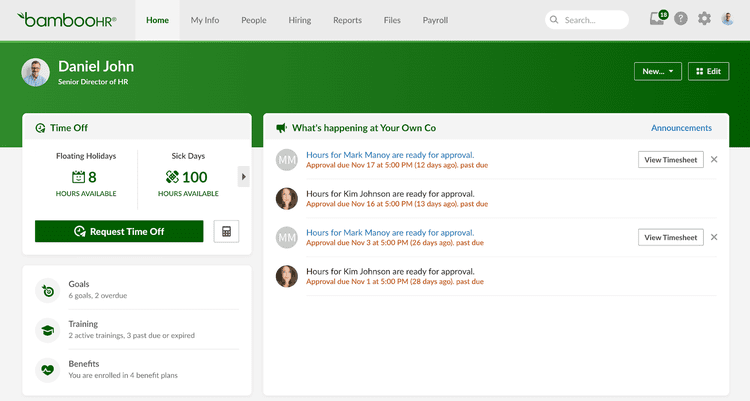
Key Features
- Electronic signatures on forms
- Customizable onboarding processes
- New hire packets of company policies
- Integration with ATS and payroll
- Mobile accessibility for remote onboarding
Pros
- Extremely user-friendly
- Great for small to medium-sized business
- Offers a great employee experience
Cons
- Restricted scalability for large enterprises
- Does not offer advanced compliance capabilities for India
6. Enboarder
Enboarder is an experience-led onboarding software dedicated to making meaningful employee experiences.
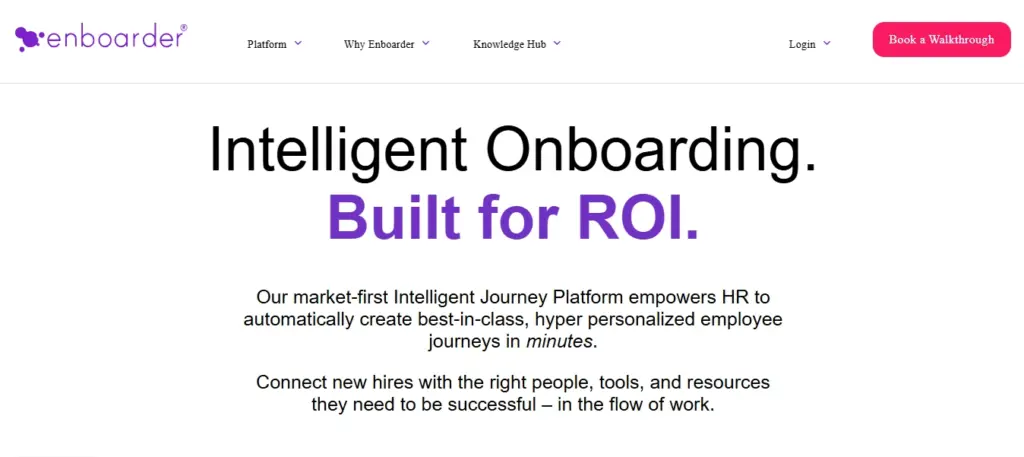
Key Features
- Interactive onboarding workflows
- Personalized communication templates
- Automated reminders for HR tasks
- Rich analytics to track engagement
- Preboarding engagement tools
Pros
- Excellent for improving employee engagement
- Highly customizable communication features
- Focuses on people-first onboarding
Cons
- Expensive for small businesses
- Lacks strong compliance support in India
7. WorkBright
WorkBright is designed for remote and mobile-first onboarding, making it perfect for companies with distributed teams.

Key Features
- Mobile-first onboarding process
- Remote document verification
- E-signature integrations
- Automated task allocation
- Cloud storage for employee files
Pros
- Ideal for remote and gig workers
- Very mobile-friendly
- Easy for employees to complete onboarding anytime, anywhere
Cons
- Limited integrations compared to larger HRMS
- More suited for small-to-medium businesses than large enterprises
8. Rippling
Rippling integrates HR onboarding software with IT automation, which sets it apart for businesses that require provisioning devices and apps in addition to onboarding.
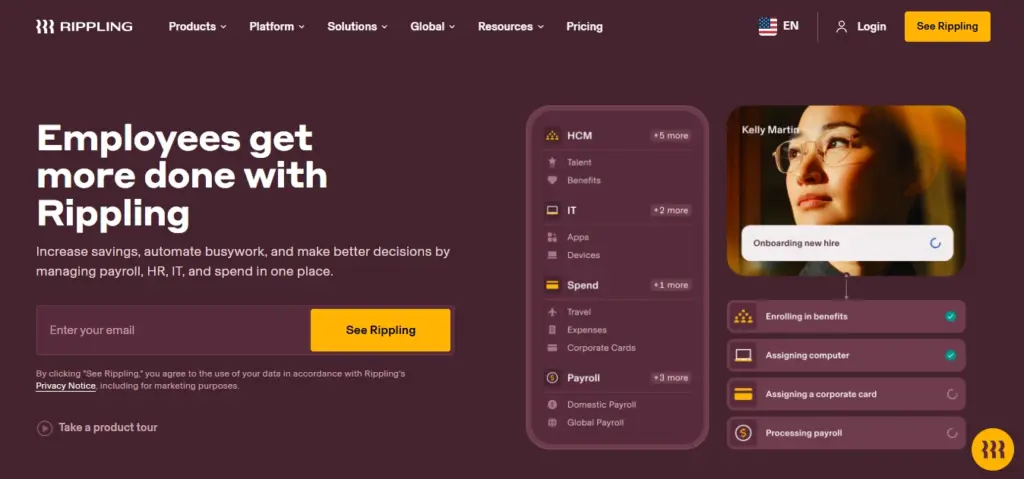
Key Features
- Automatic device and app provisioning
- E-signature and digital documents
- Payroll and compliance integration
- Employee self-service onboarding
- One-click access to HR and IT systems
Pros
- Unique combination of HR + IT onboarding
- Strong automation features
- Scalable for growing companies
Cons
- Pricing not transparent
- May be complex for very small businesses
9. Keka
Keka is a widely used employee onboarding software in India, particularly for SMEs. It streamlines HR operations while onboarding in a more interactive way.
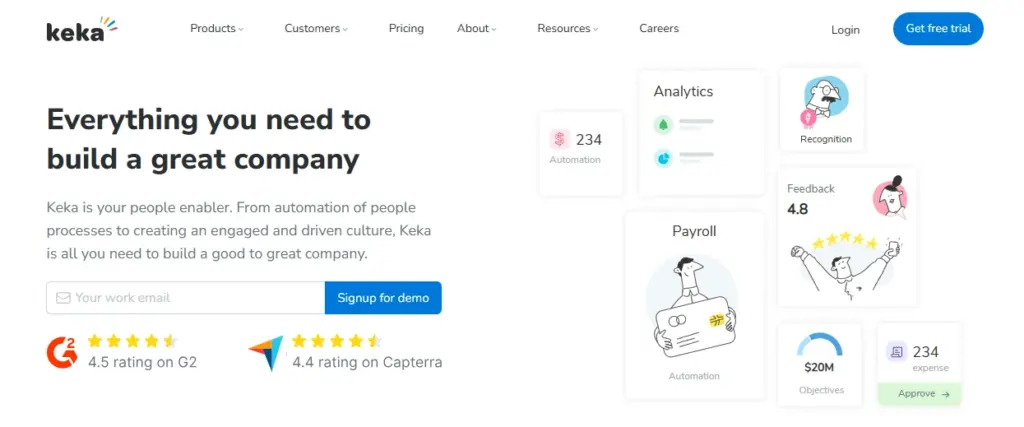
Key Features
- Automated joining formalities
- Customizable onboarding workflows
- Employee self-service portal
- Seamless payroll integration
- Cloud storage for employee data
Pros
- Simple and intuitive for HR teams
- Designed with Indian businesses in mind
- Affordable pricing
Cons
- Limited preboarding features
- Reporting can be improved
10. Superworks
Superworks is a comprehensive HRMS platform that provides trendy HR onboarding solutions. It suits startup and SME environments.

Key Features
- Customizable onboarding checklists
- E-signature and digital forms
- Automated reminders and workflows
- Preboarding engagement features
- Integration with payroll and attendance
Pros
- Cost-effective for startups and SMEs
- Easy to use with minimal training
- Scalable as the company grows
Cons
- Limited advanced analytics
- Not ideal for large enterprises
Comparison of the Best Employee Onboarding Software
Software | Best For | Key Strengths | Limitations |
Zimyo | SMEs & Mid-size Companies | End-to-end onboarding automation, strong preboarding, affordable pricing | Mobile UX could be improved |
Darwinbox | Large Enterprises | Enterprise-grade HRMS onboarding, compliance-first, role-based workflows | Complex setup, higher cost |
Zoho People | Startups & SMEs | Flexible checklists, e-signatures, integrates with Zoho apps | Limited customization outside Zoho ecosystem |
PeopleStrong | Enterprises | AI-driven workflows, compliance-heavy, mobile-first design | Requires admin training, costly for small teams |
BambooHR | Global SMBs | Simple UX, smooth new hire packets, remote-friendly | Limited compliance features in India |
Enboarder | Engagement-first Companies | Experience-driven journeys, strong communication tools | Expensive, less compliance support |
WorkBright | Remote & Gig Teams | Mobile-first onboarding, remote document verification | Limited HRMS integrations |
Rippling | Growing Tech Companies | HR + IT onboarding, device/app provisioning | Complex for small firms, unclear pricing |
Keka | Indian SMEs | Local compliance, payroll integration, intuitive UX | Limited analytics and preboarding |
Superworks | Startups & Scaling SMBs | Affordable, customizable checklists, simple setup | Fewer advanced reporting options |
Why a smooth onboarding matters?
Onboarding establishes the tone for the entire tenure of an employee within your organization. When it goes well, its advantages cascade throughout the organization. This is why it really counts – from tangible results to daily human impacts:
1. Quicker contribution and quantifiable productivity
New employees who receive the correct information, access, tools, and context up-front are able to contribute earlier. That is, teams can rely on new individuals to contribute instead of having them take weeks to get settled.
Actionable advice: decide what "productive" means per role (first finished task, first billable hour, first solo feature) and measure that milestone.
2. Better retention and reduced early churn
It’s the initial weeks when new recruits make up their minds if they actually fit in. An amiable, well-organized onboarding minimizes confusion and frustration – two widespread early reasons why employees quit.
Retention payoff: retention of workers after the organization's initial months saves on re-hiring expense, loss of knowledge, and manager burnout.
3. Improved staff involvement and attitude
Clear expectations, real introductions, and small initial wins make staff feel valued and engaged. Engaged staff are more likely to recommend the firm and stay longer.
4. Consistency and compliance
A consistent onboarding process ensures that everyone gets the same essential information: terms of employment, code of conduct, statutory documents, and safety guidelines. This minimizes compliance risk and prevents key steps being forgotten.
5. Quicker manager ramp-up
Managers have fewer hours spent pursuing paperwork and fundamental orientation when the process is automated. They have time to concentrate on coaching, role clarity, and team-fit.
6. Company culture and brand
First opportunity to share values, rituals, and how success is defined. A well-thought-out experience creates loyalty and makes new employees culture carriers and brand ambassadors.
How to know onboarding is working
Monitor basic KPIs: completion rate for onboarding, new-hire satisfaction (short survey), time-to-first-contribution, 90-day retention, and training completions. These provide clear indicators of your onboarding quality.
What constitutes the top employee onboarding software? (feature-by-feature )
All onboarding software isn’t created equal. The top ones balance usefulness, simplicity, and integration. Here are features to prioritize and why they’re important:
1. Simple, intuitive interface
- Why it matters: Busy HR teams and new hires need to be able to get things done without training. A clean UI eliminates frustration and support requests.
- What to test: Request a live demo and see how quickly a new user gets through a routine task (e.g., sign documents).
2. Strong automation & workflow builder
- Why it matters: Automated everything cuts down on manual follow-ups, auto-assign tasks, send reminders, and trigger manager actions.
- What to test: Are you able to quickly create role-based workflows? Are there templates available for you to customize?
3. Secure digital document management & e-signatures
- Why it matters: Paperless capture of documents accelerates onboarding and minimizes filing errors. E-signatures are needed for fast offer acceptance and compliance.
- What to test: Supported signature standards, document storage encryption, and audit trails.
4. Integration with HRMS, payroll, ATS, and IT systems
- Why it matters: Onboarding is seldom an island project — it must drive payroll, attendance, learning, and IT provisioning (laptop, accounts).
- What to test: Out-of-the-box connectors and APIs; ease of syncing user records.
I was able to implement the platform on my own. It helps in assigning the tasks to other employees, conducting surveys and polls, and much more. The ease of use and self-onboarding is something that I would like to appreciate.
Sonali, Kommunicate
Zimyo simplifies attendance management for our organization. The leave and attendance are so streamlined that we have never faced any difficulties with the system.
Anurag, Eggoz Nutrition
5. Mobile-first experience
- Why it matters: Many hires, contractors, and field staff prefer completing tasks on phones. Mobile access increases completion rates.
- What to test: Can new hires complete onboarding fully from a phone? Are notifications reliable?
6. Personalization & branded experience
- Why it matters: Personalized welcome messages, customised checklists, and branded portals create a memorable first impression.
- What to test: Custom email templates, onboarding journeys per role or location.
7. Analytics & reporting
- Why it matters: You must track completion, bottlenecks, and outcomes. Reports make the process better.
- What to test: Pre-configured dashboards, exportable reports, and custom KPI tracking.
8. Compliance and data privacy controls
- Why it matters: Employee data is confidential. The software should support role-based access, audit logs, and local compliance support.
- What to test: Encryption, backup policy, data residency options, and access controls.
9. Multi-language and localization options
- Why it matters: Language support enhances readability and minimizes errors for a geographically distributed team.
- What to test: Language packs and local templates.
10. Onboarding templates & pre-built content
- Why it matters: Pre-designed templates for roles and departments accelerate rollout.
- What to test: Template library and ease of customization.
11. Self-service & employee portal
- Why it is important: An area where new hires can view task status, view guides, or ask questions minimizes HR workload.
- What to test: Portal UI, search, and document download capabilities.
12. IT provisioning & access automation
- Why it is important: Ideal systems can order hardware, create accounts, and set up access rules automatically so new hires get tools on day one.
- What to try out: Identity provider connectors, device provisioning workflows.
13. Vendor support & implementation services
- Why it matters: Excellent vendor support reduces rollout headaches and assists in customization.
- What to test: Implementation partners, onboarding support, training choices, and SLAs.
Quick vendor-evaluation checklist (questions to ask during demos)
- Can I map custom workflows and conditional tasks?
- What mobile capabilities exist for new hires?
- How does the system handle bulk hiring and campus drives?
- What integrations are native (payroll, ATS, LMS, SSO)?
- How is data protected and where is it stored?
- What are implementation costs and ongoing fees?
- Do you provide onboarding templates for our industry?
- What reporting and export options are available?
Benefits of a Smooth Employee Onboarding Process
Streamlined onboarding brings business value, not just niceties. Here’s how to present the benefits in operational and financial terms, along with tangible ways to quantify them.
For the employee
- Less anxiety, more clarity: clear role expectations, simple access to forms, and brief first tasks.
- More rapid inclusion: formal welcomes, buddy systems, and check-ins during the first week make them feel part of the team.
For HR
- Less drudgery: automating repetitive tasks and follow-ups.
- Improved compliance: standard checklists guarantee required forms and regulatory steps are taken.
- Simplified reporting: integrated dashboards eliminate agonizing spreadsheets.
For managers
- Less admin, more coaching: managers have time for role clarity and feedback.
- Increased team productivity: new hires transition from observe to contribute more quickly.
For the company
- Lower cost of hiring per employee: lower turnover and quicker productivity decrease the effective cost of hiring.
- Improved employer brand: a smooth process invites referrals and positive public feedback.
- Less errors and complaints: tidy documentation minimizes confusion on offers and conditions.
How to measure benefits (KPIs you should track)
Onboarding completion rate: percentage of new employees who complete mandatory steps within the onboarding process.
- New hire satisfaction / NPS: brief pulse survey upon completion of onboarding.
- Time-to-first-contribution: when new hire finishes first substantial task.
- 90-day retention rate: percentage retained after typical probation/early phase.
- Manager satisfaction: brief manager survey about readiness of new hires.
- HR time saved: hours HR no longer wasting on paperwork and tracking tasks.
Straightforward ROI framing (how to demonstrate value to leadership)
- Current costs: time HR invests, cost of early turnover, lost productivity.
- Estimate turnover savings (reduced HR hours × hourly cost) and decreased turnover.
- Make a case: small investments in onboarding software tend to pay off in accelerated productivity and reduced attrition.
How to Select the Best Employee Onboarding Software in India (step-by-step guide)
Software selection is a realistic endeavor. What follows is a step-by-step process that has been fashioned for Indian organisations but can be applied anywhere.
Step 1 — Define your goals
- What are you trying to improve? Quicker completion of tasks, improved compliance, enhanced experience, or all of them?
- Determine essential results (e.g., 100% completion of paperwork prior to start date, 90-day retention goal).
Step 2 — Map your existing onboarding process
- Build a basic flow: offer → pre-boarding → day one → first week → first 90 days.
- Mark pain points: missing forms, delays, manager follow-ups, IT provisioning delays.
Step 3 — Create a prioritized feature list
- Break features into: Must-have, Nice-to-have, Future-wishlist. Utilize the feature list above.
Step 4 — Shortlist vendors & do demos
- Assess through live demos with your actual hiring scenarios. Get vendors to demonstrate particular tasks: offer letter, document upload, IT provisioning, payment of joining bonus, or bulk campus onboarding.
Step 5 — Pilot with a small group
- Pilot for one department or one hiring batch to test workflows and check KPIs.
Step 6 — Evaluate implementation & support
- Verify vendor implementation services: do they assist with templates, training, and integration?
- Verify support hours and escalation routes.
Step 7 — Price negotiation and agreement terms
- Look for low-cost or no-cost surprises: onboarding fees, per-module prices, API access fees, integration fees, and training charges.
- Get clear terms for data export and exit – you must be able to export employee records with ease.
Step 8 — Rollout & measure
Launch in phases, gather feedback, refine workflows, and track KPIs defined in Step 1.
India-specific factors
- Payroll and statutory integration: Make sure the onboarding software can transfer required data to your payroll system and accommodates local payslip/benefit streams.
- Local-language support: In larger geographically dispersed teams, language options are beneficial.
- Data residency and compliance: Inquire about where employee data resides and vendor compliance procedures.
- Support hours and local presence: Look for vendors with support corresponding to Indian business hours or local partners
Implementation best practices (practical checklist — no jargon)
Pre-boarding (prior to first day)
- Send welcome pack and role summary.
- Finish document collection and e-signatures.
- Provide login details and day-one schedule (if relevant).
- Ask for IT provisioning (laptop, accounts) through the onboarding tool.
Day one
- Host a welcome orientation or welcome meeting.
- Offer a transparent “first week” checklist.
- Introduce immediate team and buddy/mentor.
First week
- Assign initial meaningful tasks.
- Plan role-specific training and compliance briefings.
- Touch base with manager and HR.
First 30–90 days
- Operate regular check-ins and feedback loops.
- Monitor training completion and early performance milestones.
- Capture feedback on the onboarding experience to drive continuous improvement.
Change management
- Make it easy to communicate with managers regarding their onboarding role.
- Leave simple manager checklists within the onboarding software.
- Refine templates using pilot feedback.
I was able to implement the platform on my own. It helps in assigning the tasks to other employees, conducting surveys and polls, and much more. The ease of use and self-onboarding is something that I would like to appreciate.
Sonali, Kommunicate
Zimyo simplifies attendance management for our organization. The leave and attendance are so streamlined that we have never faced any difficulties with the system.
Anurag, Eggoz Nutrition
What else Zimyo offers
As you’re positioning Zimyo within this blog, here’s a more comprehensive look at what Zimyo normally includes as part of its HR suite (utilize these as content blocks or bullet points on the landing page):
1. End-to-end HRMS integration
Zimyo connects onboarding with core HR processes so a hire’s record rolls into payroll, attendance, and performance – no duplicate entry.
2. Payroll automation & compliance
Automated salary processing, statutory calculations, and compliance reporting minimize errors and save time for finance and HR.
3. Recruitment & ATS
Recruit module features resume parsing, candidate screening phases, interview booking, and offer handling – simplifies recruiting into onboarding.
4. Travel, expense, vendor, and petty cash management
Finance modules process Travel Desk request, expense reimbursements, vendor invoices, and petty cash balances so employee expenditures are recorded with HR processes.
5. Attendance, leave & shift management
Biometric integrations, shift rosters, and leave structures synchronize with payroll and onboarding records.
6. Performance & learning modules
Appraisals, goal setting, and learning journeys assist new hires in transitioning from onboarding to development seamlessly.
7. Employee engagement & rewards
Employee recognition, rewards, and surveys maintain early engagement high and offer feedback loops to enhance the onboarding experience.
8. Self-service portals & mobile apps
Employees fill out forms, monitor status, and receive access to resources through a mobile-enabled portal.
9. Reports & dashboards
HR and manager dashboards that display onboarding status, compliance completion, and key metrics in one glance.
10. Integration & implementation support
Pre-configured connectors and implementation support minimize rollout friction. Zimyo modules are integrated so a hire flows through systems automatically.
Conclusion
Excellent onboarding is one of the most impactful things that HR can invest in. It cuts friction, accelerates productivity, enhances retention, and makes your organization a place where people are willing to remain. The best onboarding software integrates automation, a touch of humanity, and integrations that eliminate manual labor.
Quick next steps you can use on the page or to advise stakeholders
- Determine the three onboarding results your business needs to attain (e.g., 100% paperwork completion, lower manager admin, improved 90-day retention).
- Develop a pilot plan: select a single department, pilot the onboarding tool, solicit feedback, and track the selected KPIs.
- Utilize the scoring matrix below to narrow down vendors, then conduct a side-by-side demo with your actual hire scenarios.
- If you prefer an all-in-one HRMS that connects onboarding to payroll and performance, consider Zimyo as a candidate in your shortlist.
FAQs
What is the best onboarding software?
Zimyo is highly recommended in India for its affordable, customizable, and end-to-end onboarding features, while tools like BambooHR and Rippling are also popular.
What are the 5 C's of employee onboarding?
The 5 C’s of employee onboarding are:
- Compliance – Completing legal and policy requirements
- Clarification – Explaining job roles and expectations
- Culture – Introducing company values and work environment
- Connection – Building relationships with peers and leaders
- Check-back – Following up to ensure smooth integration
Does Microsoft have an onboarding tool?
Yes, Microsoft Viva Connections and Microsoft Teams offer onboarding tools that help new hires access resources, connect with teams, and complete tasks digitally.
Which is the best small business onboarding software?
For small businesses, Zimyo is the best option due to its affordability, simplicity, and scalability.

